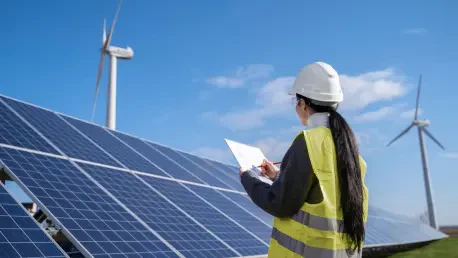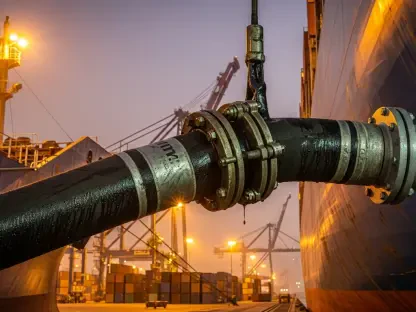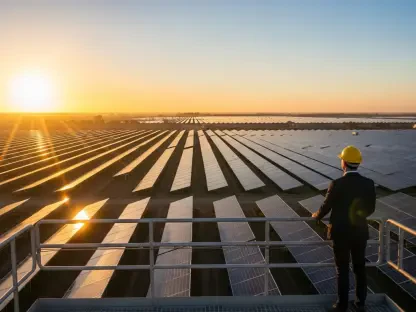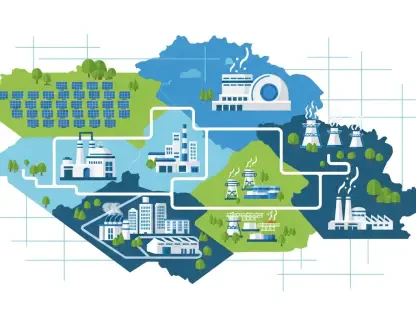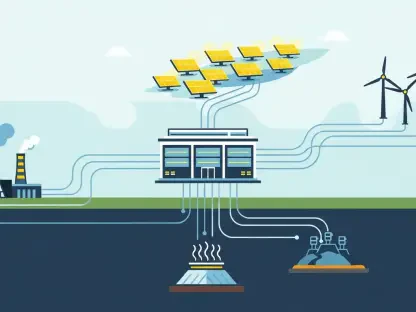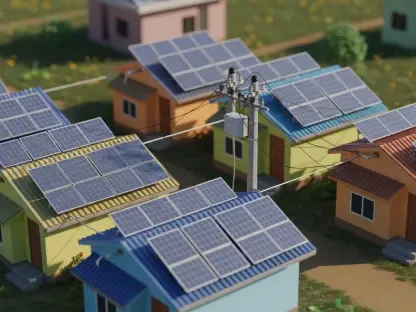Christopher Hailstone is highly regarded in the renewable energy sector, particularly for his expertise in energy management and electricity delivery. His insights are indispensable for understanding grid reliability and security. In this interview, we explore the current state of clean energy in the Midwest and South amidst political challenges, developer uncertainties, and the significant yet occasionally stalled progress in clean power.
Can you explain how political uncertainty is affecting clean energy momentum in the Midwest and South?
Political uncertainty creates an atmosphere where investment and development in clean energy become hesitant. In regions like the Midwest and South, where there have been substantial advances in utility-scale solar and storage, emerging political risks could hinder further progress. Investors and developers need to feel confident about the stability and long-term viability of policies that support clean energy infrastructure. Without this assurance, there is a risk of losing momentum in these critical areas.
What are the implications of developers canceling more than $14 billion in clean energy projects this year?
Canceling such a significant amount of projects represents a substantial setback for the clean energy industry. This kind of financial withdrawal indicates that developers are facing challenges in securing funding or encountering barriers like regulatory hurdles and uncertain tax credit policies. Consequently, state and local economies lose potential benefits like job creation, increased investment, and the environmental advantages associated with these projects.
Why do you think eight of the ten top states for clean energy deployment voted Republican in the last Presidential election?
It’s interesting, considering we often associate progressive environmental policies with Democratic leadership. Yet, states that lean Republican have been pragmatic, recognizing the economic benefits clean energy brings. They see it as an opportunity to diversify their energy portfolios, reduce costs, and bring jobs and investments to their regions. This may be more about economic opportunity than political alignment.
Texas has emerged as a leader in clean energy deployment. What are the key factors contributing to this success?
Texas’s geographical advantages provide vast lands suitable for solar and wind installations. Beyond that, there’s a strong tradition of expertise in energy markets due to its long history with oil and gas. Plus, Texas has cultivated a regulatory environment that encourages competition and innovation, making it appealing for private investment. These factors coalesce to position Texas as a leader in clean energy deployment.
How did energy storage capacity achieve a 65% year-over-year increase nationwide?
Energy storage has rapidly become the backbone for renewable energy integration, addressing the variability of solar and wind resources. This growth is largely due to technological advancements, declining battery costs, and supportive policy frameworks that offer incentives for storage development. Additionally, there’s an increasing recognition among utilities of the critical role storage plays in enhancing grid reliability and curbing peak demand.
Total deployments in Q1 2025 were 9% short of the record set in Q1 2024. What contributed to this slowdown?
Factors at play include supply chain disruptions, such as delays in the procurement of materials due to global market fluctuations. Additionally, political uncertainties around renewable energy incentives may have influenced developers’ timelines. Despite these challenges, the sector remains resilient, as indicated by the significant deployments still occurring.
How are states like Indiana, Illinois, Mississippi, Wisconsin, and Ohio advancing in solar energy compared to California?
These states are making remarkable gains by aggressively pursuing solar installations, often driven by supportive state policies and incentives that attract investment. While California was an early pioneer, the sunbelt and Midwest states are now capitalizing on cost reductions in solar technology, enabling them to catch up or even surpass in terms of deployment scale.
What factors are contributing to the slower growth of the clean power development pipeline compared to last year?
The slowdown is likely due to uncertainties around policy incentives, such as federal tax credits, which play a crucial role in project economics. There are also logistical challenges, like supply chain constraints and workforce availability, which can delay project timelines and affect pipeline growth.
Can you elaborate on the impact of the proposed wind-down of energy tax credits by the House GOP?
The proposed rapid wind-down of these credits creates volatility in the market, as developers rely on them for project viability. If enacted, it could lead to reduced investment in the clean energy sector, stunting growth and possibly reversing progress in emissions reductions and energy transition efforts. Economically, it could undermine the benefits being realized in rural and state economies.
Could you discuss the role of domestic manufacturing and energy production investments in rural communities?
Domestic manufacturing and energy production have bolstered rural economies by providing jobs and generating significant tax revenue and land lease payments. These investments revitalize local communities, often leading to improved infrastructure and public services. They also ensure that the U.S. remains competitive globally by encouraging innovation and self-reliance in its energy production.
What is helping shovel-ready projects overcome hurdles given current political instability?
Shovel-ready projects can leverage the existing frameworks of permitting and financing. Developers with a clear path to market and strong relationships with local authorities are better positioned to navigate regulatory changes. Moreover, having flexible project management strategies and access to diversified funding sources can be instrumental in overcoming slowdown risks.
Why are utilities and power producers still proposing new gas-fired generation projects amidst the growing clean power sector?
Utilities may view gas-fired projects as a necessary bridge in the transition towards cleaner energy. These plants provide reliable base-load power, which can complement the intermittent supply of renewables. The hesitance to fully commit to renewables stems from the need to ensure grid reliability and stability, making gas an attractive transitional resource.
What challenges do developers face with turbine supply, and what impact does this have on gas power plant projects?
Developers face turbine shortages due to manufacturing backlogs and global supply chain disruptions. It can significantly delay project timelines and increase costs, particularly for gas power plant projects dependent on timely turbine delivery. This bottleneck highlights the importance of supply chain resilience in ensuring efficient project execution.
How do signed interconnection agreements hasten solar installation deployment compared to gas projects?
Signed interconnection agreements streamline the process by securing a project’s grid access, reducing administrative delays. Unlike gas projects, which involve more complex permitting and environmental assessments, solar projects can proceed with fewer bottlenecks. This efficiency translates to faster commissioning and deployment timelines.
What measures can be taken to ensure reliable clean energy deployment amidst political uncertainties?
To bolster reliability, diversifying energy portfolios and securing long-term purchase agreements can buffer against political shifts. Investing in research and technology to improve grid integration and storage solutions can also help. Additionally, maintaining open communication channels between policymakers, developers, and other stakeholders can align interests and support strategic planning that cushions against policy changes.
